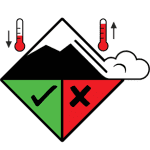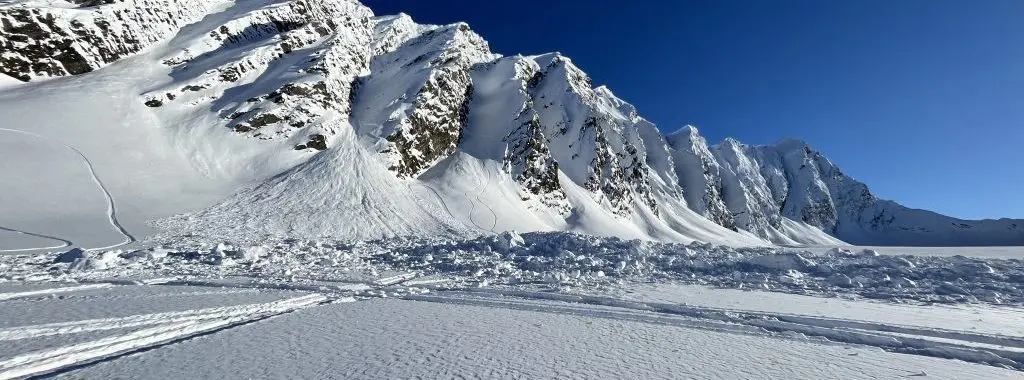As the sun begins to return to our northern latitude in Alaska, the snowpack continues to undergo changes despite winter being over. Red flags include: increasing freezing levels, warming daytime temperatures, lack of an overnight freeze, strong solar radiation, rain-on-snow and more snowfall all contribute to springtime avalanche conditions.
- Unconsolidated surface snow that heats up during the day can release as a wet loose avalanche and entrain heavier snow as it moves downslope. It is very difficult to manage or escape from and can knock riders over/into terrain traps.
- Weak persistent layers that formed during cold spells weeks, or months ago may begin to wake up as melt water at the surface works it's way down through the snowpack weakening bonds that cause dangerous wet slab avalanche problems.
- Cornice fall from overhanging masses of snow formed by wind deposits can fail and have have enough mass to be very destructive and deadly. Besides falling, they can also trigger avalanches at the surface or deeper down in the snowpack.
- The release of the entire snow cover over the ground are known as glide avalanches. These are impossible to predict and should be avoided when observable glide crack begin to open up especially as temperatures warm significantly.
We should also be very aware of overhead and objective hazards such as avalanche slopes or paths, rock fall potential, cornices, ice fall and seracs that for example may be receiving heat from the sun, while the valley bottom remains in the shadow of cooler temperatures.

*Image courtesy of the Valdez Avalanche Center
